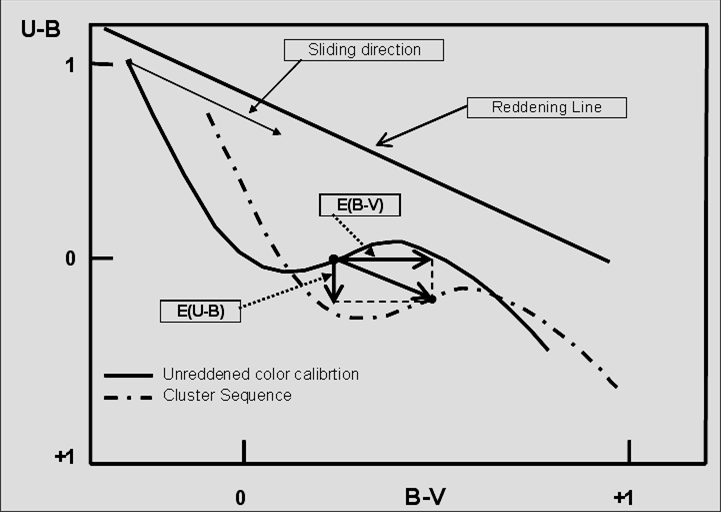Determination of <E(B-V) through the Sliding Fit Technique
How to obtain medium cluster colour excess.
I apologize for the use of the Italian notation. So, in the following, the commas should always be read as dots.
The determination of medium color excess <E(B-V)> happens on TCD/CCD, using as comparison an un-reddened intrinsic color empirical calibration for instance, the Schmidt-Kaler (1982) empirical calibration. Practically the <E(B-V)> value is obtained using the sliding fit technique. This technique consists in move the unreddened two color calibration according to the reddening line (RL) slope, until the match with the open cluster distribution is obtained see fig. 1.

Fig. 1 - The sliding-fit technique
In figure 1, is illustrated the effect of interstellar reddening above an open cluster two color shape. This reddening, in fact, causes the stars to move, on TCD/CCD, to the right and nearly parallel to the slope of the reddening line, by one amount equal to the average value of cluster reddening. The change in color produced by this phenomena on every stars of the cluster is called color excess and denoted by E(B-V). Normally the slope of the reddening line for OB stars is given by the following equation:
E(U-B)/E(B-V) = 0,72 + 0,05E(B-V)
A practical example: the determination of <E(B-V)> for M36 cluster
To see a practical example of the use of this technique, please click on the following command.
© 2006 - Valter Arnò.